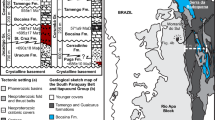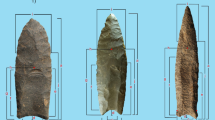Abstract
MR. W. COPELAND BORLASE, the talented author of “Nænia Cornubiæ,” in his communication to NATURE (vol. viii. p. 202), calls attention to the structure of Lanyon Quoit as an undeniable example of a British tripod cromlech or free-standing dolmen, by way of “protest against the dictum of Mr. Lukis being extended to our British examples, before a careful scrutiny has been made of every monument of the kind, from one corner of our isles to the other.”
This is a preview of subscription content, access via your institution
Access options
Subscribe to this journal
Receive 51 print issues and online access
$199.00 per year
only $3.90 per issue
Buy this article
- Purchase on SpringerLink
- Instant access to full article PDF
Prices may be subject to local taxes which are calculated during checkout
Similar content being viewed by others
References
See Mr. Borlase's letter to the Antiquary, July 27, 1872.
Letter to the Antiquary, July 27, 1872.
Mr. Borlase mentions a possible third example, in his “Nænia,” p. 26.
Antiquities, pp. 159 and 223.
The younger Borlase acknowledges that “several of the stones had been broken.” “Nænia,” p. 18.
Nænia Cornubiæ, p. 55.
“Rude Stone Monuments,” pp. 343, 344, Figured in NATURE vol. v. p. 387
Nænia Cornubiæ, p. 43.
Author information
Authors and Affiliations
Rights and permissions
About this article
Cite this article
OLIVER, S. Dolmen-Mounds v. Free-Standing and Tripod Cromlechs . Nature 8, 344–346 (1873). https://doi.org/10.1038/008344a0
Issue date:
DOI: https://doi.org/10.1038/008344a0



